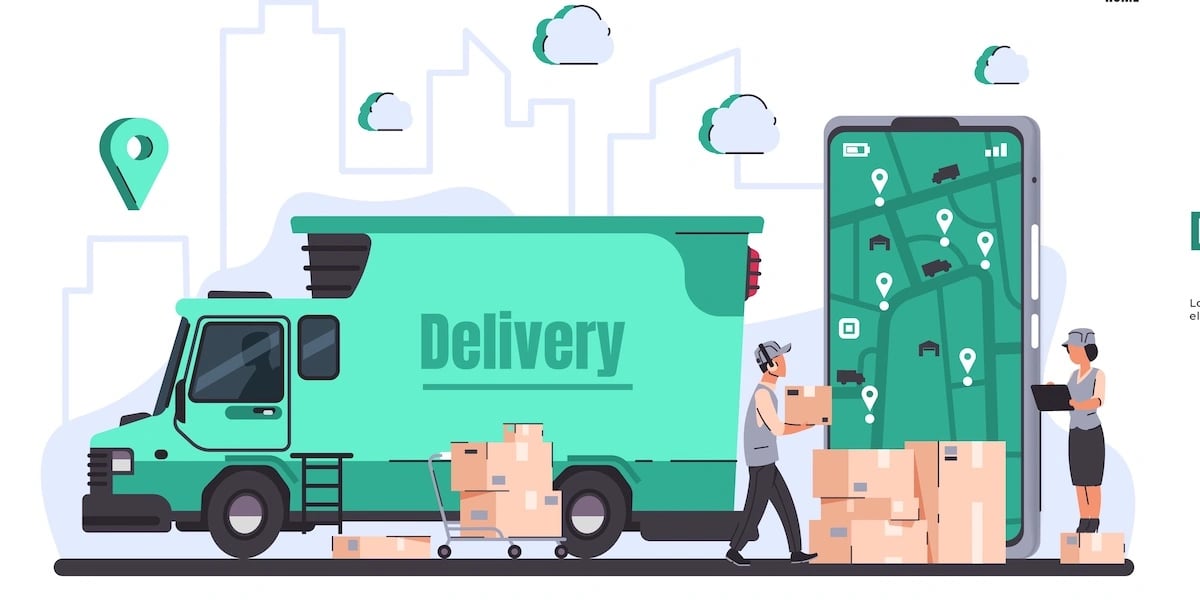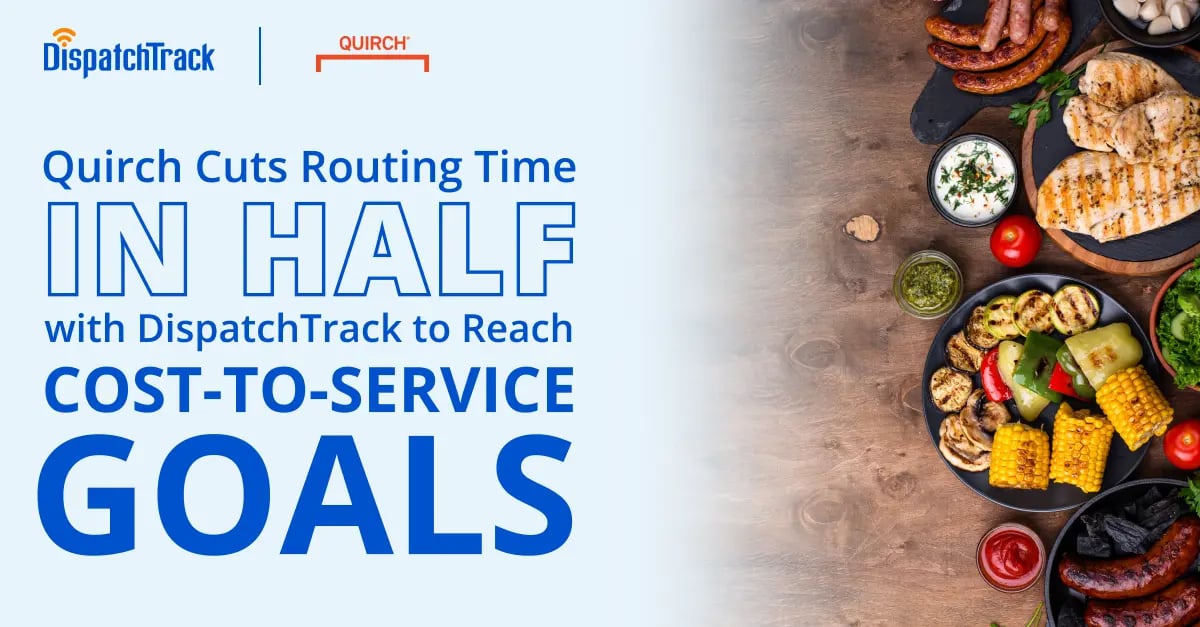Things change faster than ever in B2B delivery these days. Once upon a time, your typical beverage distribution plan involved delivering the same product mix to the same customers at the same times month in and month out. But these days mixes are changing constantly, and B2B customers increasingly expect a delivery experience that includes the flexibility and agility that they’re used to receiving as end-consumers.

The upshot here is this: doing things the way you’ve always done them because you’ve always done them that way isn’t going to cut it in delivery management anymore. If you haven’t optimized your routes in a while, there’s a good chance that you’re making some delivery runs that are simply not cost-effective. If you’re relying on a technology stack that you’ve been leveraging for decades, there’s a good chance you’re missing out on chances to uncover new efficiencies and serve your customers in a way that’s better both for them and for your bottom line.
Technology is changing almost as rapidly as delivery expectations, which means that B2B delivery logistics organizations—whether they’re beer distributors, jansan businesses, producers, or anyone else who distributes regularly to the same accounts—are actually in a strong position to become more adaptable in how they handle deliveries. If you can leverage the best practices below, you can keep pace with a changing market and evolving customer expectations.
1. Optimize Routes More Frequently
Historically, creating new routes for beverage distribution and similar use cases has been an incredibly time consuming task. Simply updating a route by hand can take weeks or months—to say nothing of creating one from scratch. And many legacy software solutions designed to help with routing are nearly as bad, often making the process so complex that larger businesses have to shell out for outside specialists to use their own software for them.
It’s not hard to imagine the result here: more often than not, businesses keep using the same routes even as order volumes, prices, order mixes, and other market conditions change noticeably. Sure, you could probably be meeting your customers’ demands in a more efficient way—but is it worth the effort, the cost, and the potential disruption that comes from the herculean effort that it takes to do a reroute?
But it doesn’t have to be that way. Modern routing technology can make it fast and easy to reroute in just minutes—meaning that you can update your routes as often as you like without committing to a huge internal project. In a perfect world, your routing technology will even show you the delta between your proposed route and the existing one, so you can seamlessly communicate any changes to customers and drivers. When you can make this happen, you can actually keep your plans adaptable to changing conditions—meaning that you can reroute as frequently as you need to in order to ensure that efficiency is the default.
2. Migrate to the Cloud
Above, when we mentioned legacy software that requires specialists just to utilize, we were referring to a very particular kind of on-premise technology deployment. The cloud vs on-prem debate has been hashed out over and over during the last few years, and true, scalable, SaaS technology has emerged as a clear winner for any number of reasons: speed, processing power, scalability, ease of integration—you name it.
Of course, all of those advantages are stacked up against a very real challenge: change management. But as efficiency in B2B last mile deliveries gets harder and harder to achieve, the argument in favor of the status quo gets weaker and weaker. Last mile delivery and distribution for something as complex as beer or food distribution requires not just a single solution but a whole ecosystem, and the cloud is the best way to ensure interoperability. By the same token, it’s also the best way to ensure that you’re always running the latest version of your software and that you have access to the latest features.
In short, the cloud is a prerequisite for future-proofing your delivery operations within a market that continues to evolve rapidly.
 3. Prioritize Real-Time Visibility Beyond Telematics
3. Prioritize Real-Time Visibility Beyond Telematics
To ensure that you’re getting the right goods to the right customers at the right times—all while keeping cost-to-serve relatively low—you need to be proactive and adaptable in your planning. At the same time, you also need to be able to stay adaptable during execution, even when deliveries aren’t going according to plan.
Naturally, real-time delivery visibility is crucial for spotting issues in the field and resolving them as quickly as possible. But what’s the right kind of visibility when it comes to managing by exception?
To be sure, granular GPS-tracking via telematics can be a big help—but real, strategic visibility needs to go beyond truck location to include delivery statuses and continually-updating live delivery ETAs. When you have these elements in place, it’s much easier to get a clear picture of your entire delivery operation at a glance and home in on the right data at the right time. This way, you can give your customers a heads up if there’s going to be any disruption in service, and then work to minimize its impact.
4. Find the Right Customer Communication Cadence
Speaking of keeping your customers in the loop. We noted above that the B2B customer delivery experience is starting to get closer to the B2C one that we’ve all become used to in our daily lives—and that’s certainly true—but there are differences in expectations that will probably persist for a while.
When you deliver to end consumers, the more communication touchpoints the better. They may be expecting notifications when the delivery is scheduled, when the truck leaves the warehouse in the morning, when their stop is next, and whenever the projected ETA shifts. If you’re delivering to a restaurant or a grocery store, however, there’s a good chance that this is a more frequent cadence of updates than the customer really wants. Texts and phone calls are fundamentally interruptive, which means it’s easy to have too much of a good thing when it comes to communication.
Every business and every use case will be different—so the important thing is to find technology that gives you the flexibility to define what the right communication is for your customers, and then streamline and automate it so that it becomes second nature. This isn’t just about crafting a great customer experience—though that is increasingly important even in B2B—it’s also about making sure that your clients have exactly the delivery information they need. If you can prevent a few failed deliveries by making sure that everyone knows exactly when the truck is going to arrive, you can save money and ensure happier customers all around.
5. Connect Sales, Merchandising, and Delivery
When it comes to keeping your customers happy, delivery is just one piece of the puzzle. Sure, it’s an incredibly crucial piece—but a lot of other processes have to work seamlessly in order to make sure that your customers are satisfied and your relationship with them stays strong. Specifically, your sales and merchandising processes also need to be laser-focused on providing great service in a cost- and time-efficient way.
When these processes operate in their own silos with limited visibility between them, it can create disconnect and you can end up offering disjointed service to your customers. On the flipside, by leveraging technology to make data sharing and visibility the default between these functions, you can empower smarter, more cohesive service from end to end. In an environment that’s constantly changing—this extra level of optimization beyond the bounds of your delivery operations can make a huge difference. Combined with the ability to reroute as often as needed, the ability to ensure visibility from end-to-end both internally and externally, and the right final mile delivery software, it can help pave the way for smarter, more efficient B2B delivery operations.